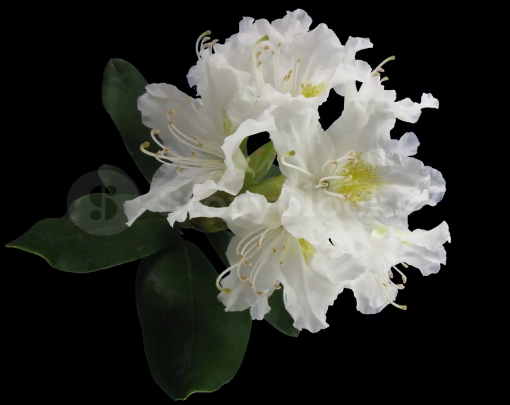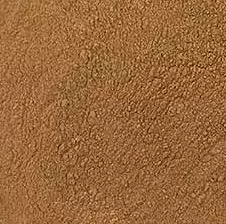Compendium of the most significant studies with reference to properties, intake, effects.
Rezk A, Al-Hashimi A, John W, Schepker H, Ullrich MS, Brix K. Assessment of cytotoxicity exerted by leaf extracts from plants of the genus Rhododendron towards epidermal keratinocytes and intestine epithelial cells. BMC Complement Altern Med. 2015 Oct 15;15:364. doi: 10.1186/s12906-015-0860-8.
Abstract. Background: Rhododendron leaf extracts were previously found to exert antimicrobial activities against a range of Gram-positive bacteria. In this study, we investigated which of the extracts with these antimicrobial properties would be best suited for further exploitation. Specifically, the project aims to identify biologically active compounds that affect bacterial but not mammalian cells when applied in medical treatments such as lotions for ectopic application onto skin, or as orally administered drugs....Conclusions: We conclude that leaf extracts from highly potent antimicrobial R. minus and R. racemosum are safe to use at 50 μg/mL in 24-h incubations with HaCaT keratinocytes and IEC6 intestine epithelial cells in monolayer cultures. Extracts from R. rubiginosum as well as R. concinnum or R. ferrugineum are applicable to either keratinocytes or intestinal epithelial cells, respectively. Beyond the scope of the current study, further experiments are required to identify the specific compounds contained in those Rhododendron leaf extracts that exert antimicrobial activity while being non-cytotoxic when applied onto human skin or gastrointestinal tract mucosa. Thus, this study supports the notion that detailed phytochemical profiling and compound identification is needed for characterization of the leaf extracts from specific Rhododendron species in order to exploit their components as supplementary agents in antimicrobial phyto-medical treatments.
Seephonkai P, Popescu R, Zehl M, Krupitza G, Urban E, Kopp B. Ferruginenes A-C from Rhododendron ferrugineum and their cytotoxic evaluation. J Nat Prod. 2011 Apr 25;74(4):712-7. doi: 10.1021/np100778k.
Abstract. Three new compounds, ferruginenes A (1) and B (2) and a mixture of C-5'(R) and C-5'(S) ferruginene C (3) diastereomers, have been isolated from a cytotoxic chloroform-soluble fraction of the leaves of Rhododendron ferrugineum together with 12 known compounds. The structures of these new compounds were elucidated by analyses of NMR spectroscopic and mass spectrometric data. Compounds 1-3 were tested for their cytotoxicity against three human cancer cell lines, namely, HL-60, HeLa-S3, and MCF-7.
Charrier O, Dupont P, Pornon A, Escaravage N. Microsatellite marker analysis reveals the complex phylogeographic history of Rhododendron ferrugineum (Ericaceae) in the Pyrenees. PLoS One. 2014 Mar 25;9(3):e92976. doi: 10.1371/journal.pone.0092976.
Abstract. Genetic variation within plant species is determined by a number of factors such as reproductive mode, breeding system, life history traits and climatic events. In alpine regions, plants experience heterogenic abiotic conditions that influence the population's genetic structure. The aim of this study was to investigate the genetic structure and phylogeographic history of the subalpine shrub Rhododendron ferrugineum across the Pyrenees and the links between the populations in the Pyrenees, the Alps and Jura Mountains. We used 27 microsatellite markers to genotype 645 samples from 29 Pyrenean populations, three from the Alps and one from the Jura Mountains. These data were used to estimate population genetics statistics such as allelic richness, observed heterozygosity, expected heterozygosity, fixation index, inbreeding coefficient and number of migrants. Genetic diversity was found to be higher in the Alps than in the Pyrenees suggesting colonization waves from the Alps to the Pyrenees. Two separate genetic lineages were found in both the Alps and Pyrenees, with a substructure of five genetic clusters in the Pyrenees where a loss of genetic diversity was noted. The strong differentiation among clusters is maintained by low gene flow across populations. Moreover, some populations showed higher genetic diversity than others and presented rare alleles that may indicate the presence of alpine refugia. Two lineages of R. ferrugineum have colonized the Pyrenees from the Alps. Then, during glaciation events R. ferrugineum survived in the Pyrenees in different refugia such as lowland refugia at the eastern part of the chain and nunataks at high elevations leading to a clustered genetic pattern.
Lechtenberg M, Dierks F, Sendker J, Louis A, Schepker H, Hensel A. Extracts from Rhododendron ferrugineum do not exhibit grayanotoxin I: an analytical survey on grayanotoxin I within the genus Rhododendron. Planta Med. 2014 Oct;80(15):1321-8. doi: 10.1055/s-0034-1383039
Abstract. For quantitative determination of grayanotoxin I (1) in plant material, a GC/MS method was developed after trimethylsilyl derivatisation of the analytes. Forskolin (5) was used as an internal standard for quantification. ICH-compliant method validation indicated sufficient specificity, precision, quantitation (15 µg/mL) and detection (5 µg/mL) limits. Regression analysis showed that a non-linear (polynomial) model was preferable to a linear one. For isolation of grayanotoxin I reference material from Rhododendron ponticum leaves, an efficient two-step fast centrifugal partition chromatography isolation protocol is described. A survey of 17 different plant species from the genus Rhododendron revealed high grayanotoxin I content for R. catawbiense, R. ponticum, R. degronianum subsp. yakushimanum, R. × sochadzeae, R. moupinense, R. galactinum, and R. mucronatum var. ripense. The content of this compound in leaf material from R. ponticum decreased rapidly during drying process. Grayanotoxin I was not detected in different batches of fresh leaves and fruits from R. ferrugineum. In contrast to the claims of German health authorities, this traditionally used herb therefore cannot be evaluated as toxic due to the presence of grayanotoxin I.
Louis A, Petereit F, Lechtenberg M, Deters A, Hensel A. Phytochemical characterization of Rhododendron ferrugineum and in vitro assessment of an aqueous extract on cell toxicity. Planta Med. 2010 Oct;76(14):1550-7. doi: 10.1055/s-0029-1241016.
Abstract. Within a systematic phytochemical investigation of the leaves of RHODODENDRON FERRUGINEUM L. (Ericaceae), the volatile oil was isolated (0.7 %) and its constituents were characterized....© Georg Thieme Verlag KG Stuttgart · New York.
Löhr G, Beikler T, Hensel A. Inhibition of in vitro adhesion and virulence of Porphyromonas gingivalis by aqueous extract and polysaccharides from Rhododendron ferrugineum L. A new way for prophylaxis of periodontitis? Fitoterapia. 2015 Dec;107:105-113. doi: 10.1016/j.fitote.2015.10.010.
Abstract. The effect of an aqueous extract from the leaves of Rhododendron ferrugineum (RF) was investigated for its capacity of inhibiting the adhesion of Porphyromonas gingivalis cells to epithelial buccal KB cells. ...Copyright © 2015 Elsevier B.V.
![]() Rhododendron ferrugineum leaf cell culture extract
Rhododendron ferrugineum leaf cell culture extract 



